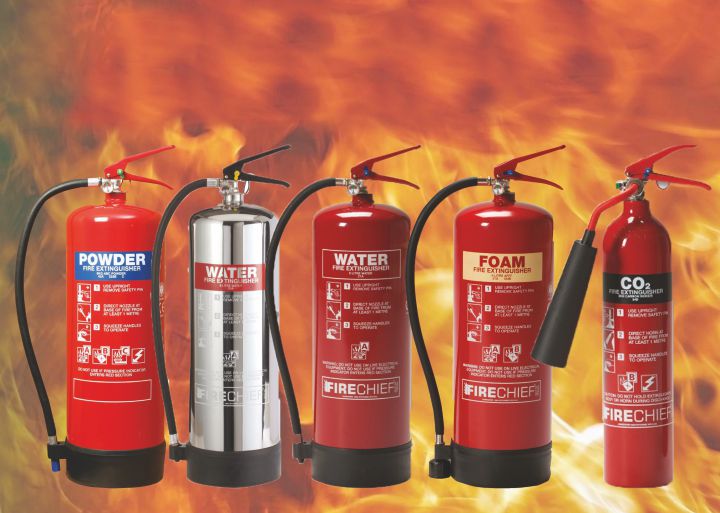Common Fire Extinguisher Types
Selecting the most appropriate type of fire extinguisher can be a confusing task as a result of many open fire extinguisher types available. A person should be very mindful if you choose a fire extinguisher because each type is intended to put out a fireplace caused by different materials.
Fire extinguishers are classified into several classes that they are being used for. These types of extinguishers also have a numerical rating for their use. Class A extinguishers are being used for ordinary combustible materials. These include document, cardboard, plastics, and wood. The numerical rating found on this kind of extinguisher shows the amount of water it can hold and the amount of fire it can extinguish. Class B fire extinguishers are specially formulated to put out there fires which care caused by flammable and combustible liquids like oil, gas, grease, and kerosene. Typically the numerical rating for Class B extinguisher indicates the area of fire in square feet it can extinguish.

Class C fireplace extinguishers here put out fires which involve electrical equipment, including appliances, outlets, wirings, and circuit breakers. When dealing with a class C fire, it is important to remember that water should not be used to extinguish it because the risk of an electric jolt is great. Class D extinguishers have extinguishing brokers that are non-conducive and they do not have a numerical rating. One of the most frequent fire extinguisher types are those found in a chemical laboratory. This kind is categorized as School D fire extinguisher and is also for fires involving flammable materials like sodium, potassium, magnesium, and titanium. Similar to Class C extinguishers, Class D extinguishers do not have a numerical ranking and are to be used exclusively for Class D fires.
Aside from these classifications, fire extinguishers are also categorized based on the extinguishing agent used. Drinking water extinguisher, also known as air-pressurized water extinguisher, is merely well suited for class A fire only. Using a drinking water extinguisher on the Class C or Class D open fire will only make fireplace bigger so be aware when identifying the type of fire before by using a particular extinguisher. The water fire extinguisher is filled with water and is pressurized with oxygen, thus can be quite dangerous in the wrong form of situation. Only fight a fire with a water extinguisher if you are sure that the fire is caused by ordinary combustible materials only.
Dry chemical extinguisher is another type of fire extinguisher and has a variety of types. This specific type of fire extinguisher is suited to a combo of sophistication A, B, and C fires. Dry substance extinguishers can be stuffed with foam or natural powder, pressurized with nitrogen. Typically the regular type of dried out chemical extinguisher is the one which is filled with sodium bicarbonate and potassium bicarbonate. This is called the BC extinguisher. The BC variety leaves a mildly corrosive residue which needs to be cleaned immediately to stop further damage.
Another variety is the ABC extinguisher which is a multipurpose dried out chemical extinguisher filled with monoammonium phosphate which is damaging to electrical appliances. Compared to CO2 extinguishers, dry chemical extinguishers have the advantage because they leave a non-flammable remains on the extinguished materials.
On the other hands, CO2 extinguishers hold the benefit over dry chemical extinguisher such that they may leave a harmful remains with an electronic device. These types of extinguishers contain carbon dioxide and are highly pressurised to extinguish a open fire.